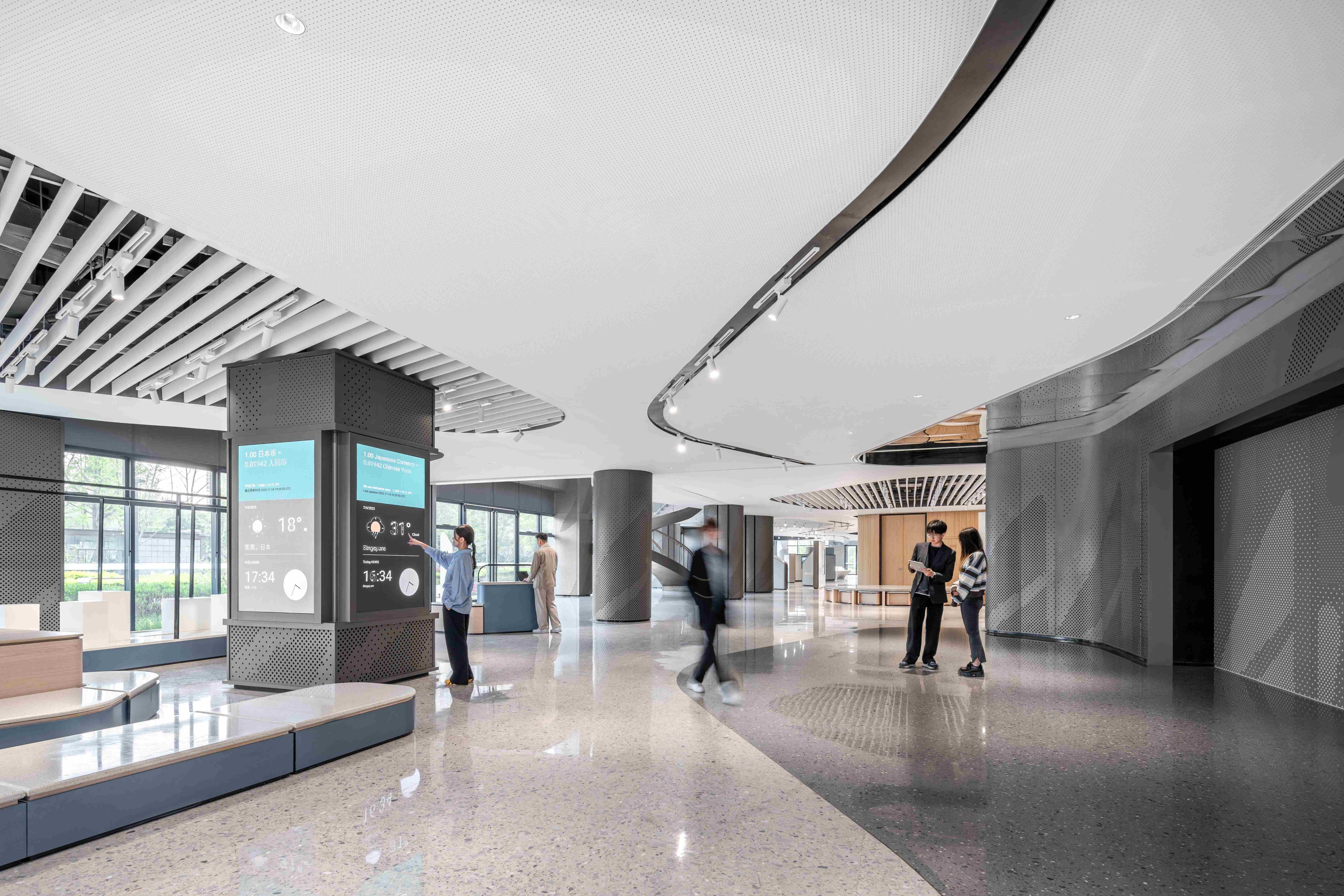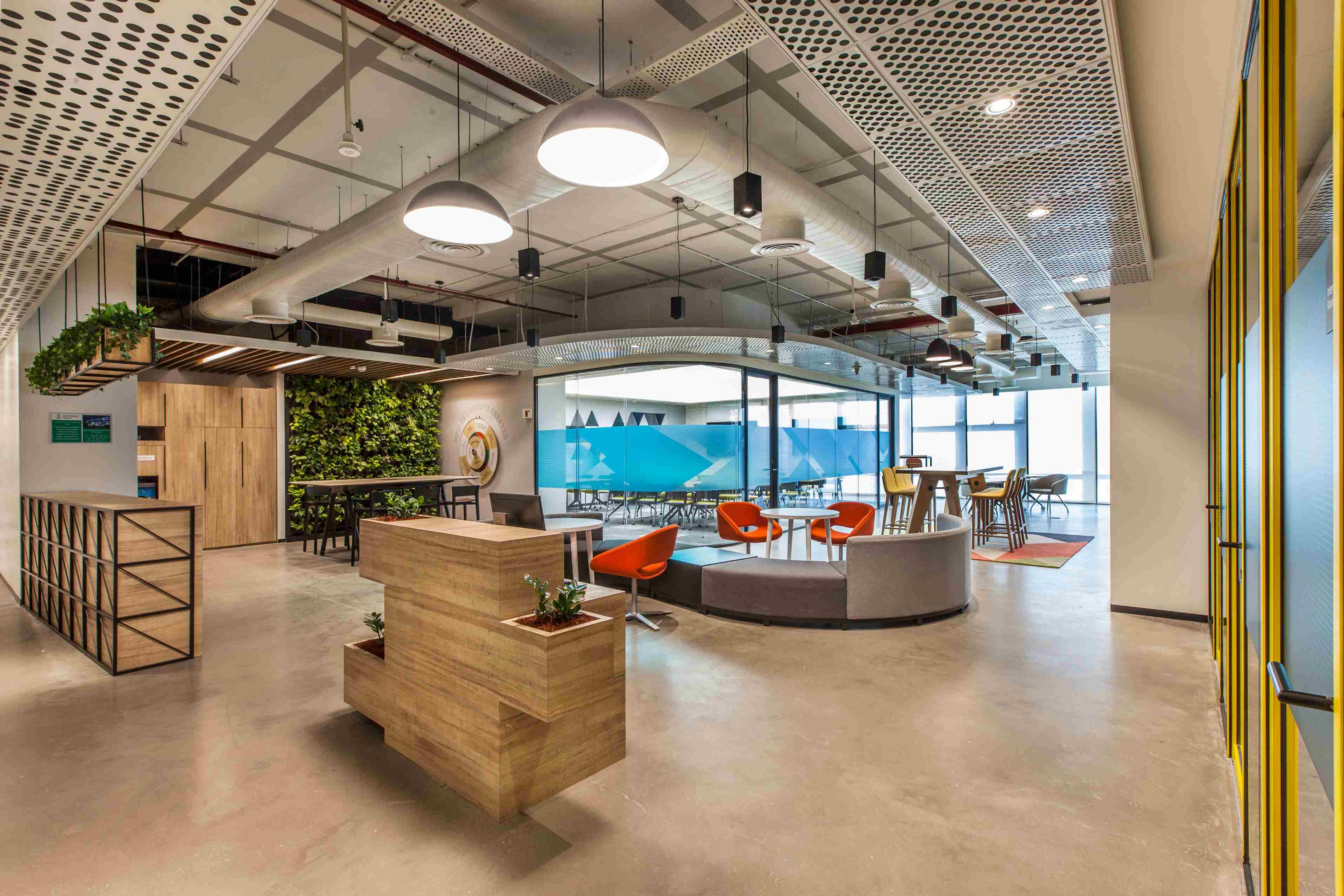Reimagining Productivity At Work: Crafting A Successful Work-centric Environment
Modern workspaces are experiencing significant shifts characterised by dynamic changes. Rapid transformations are occurring not only in organisational structures and communication methodologies but also in employees' expectations.
So, what drives this transformation?
Besides technological advancements and the growing need to adopt new ways of work, an increased focus on employee needs and well-being is one of the primary reasons. As we navigate these changing dynamics, addressing the meaning of productivity at work becomes more important than ever.
To understand this change, let's look at why it's happening. Let's assess the necessity of reimagining our work environments to establish a new normal that aligns with the changing expectations of today's talent. Additionally, we will delve into how a redefined approach to work can improve organisational efficiency and prioritise the needs and well-being of employees.
Examining the Impact of Traditional Workspaces on Employee Output
Conventional cubicles and closed office layouts were once considered the norm. But today, they present spatial constraints that can hamper your workforce’s everyday efficiency.
An average employee typically achieves daily productivity levels equivalent to 60% of their total working hours, amounting to 4.8 hours of productive work each day. Surprisingly, these numbers dwindle significantly when considering an office employee. It shrinks to a mere 2 hours and 53 minutes - the rest lost to distractions and inefficiencies.
This difference highlights the influence of the contemporary work environment on an employee. Furthermore, it shows how outdated technology and work environments pose a substantial threat to a business’s bottom line.
In an era where seamless integration of culture, collaboration, technology, and safety within a workplace is crucial, reliance on obsolete concepts and methodologies just undermines the importance of your workforce. Recognizing and addressing these challenges is necessary for cultivating modern work environments where employee experience, engagement, and efficiency come above all.
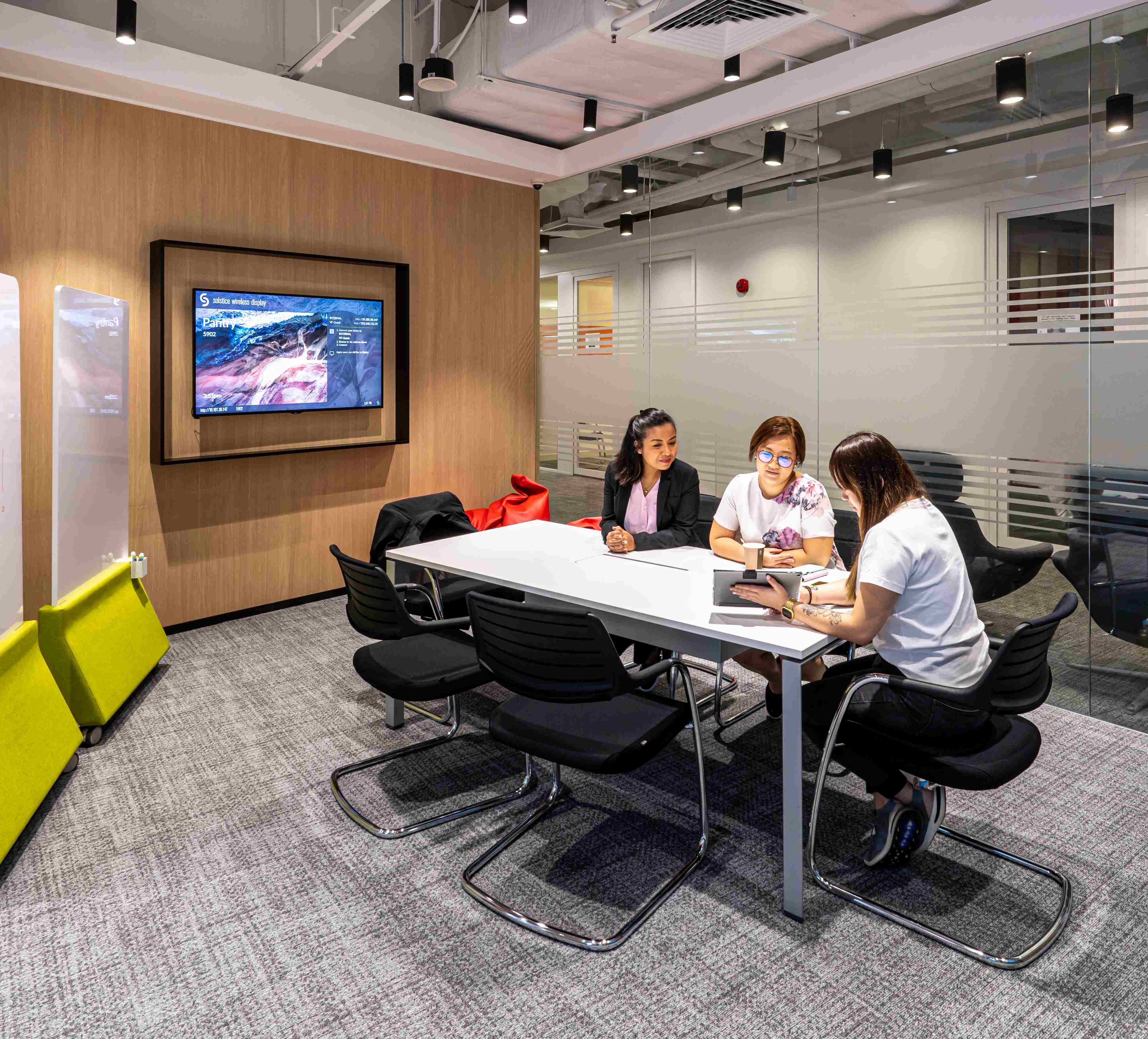
Discover the impact of a thoughtfully designed workplace.
Look at how Vodafone Singapore leveraged its workplace to boost employee collaboration and productivity.
Unlocking the Impact of Modern Workplace Design
Merging aesthetics with functional efficiency helps transformative designs create inspiring and work-centric workplaces. Such spaces can transcend the conventional boundaries of traditional office layouts. In doing so, these designs cater to the dynamic needs of modern work culture to enable an environment that prioritises collaboration and stimulates creativity.
The shift towards open-concept work environments, liberated from the confinements of traditional walls, is vital in nurturing collaboration. This departure from compartmentalised spaces encourages spontaneous interactions, idea-sharing, and collective engagement among team members.
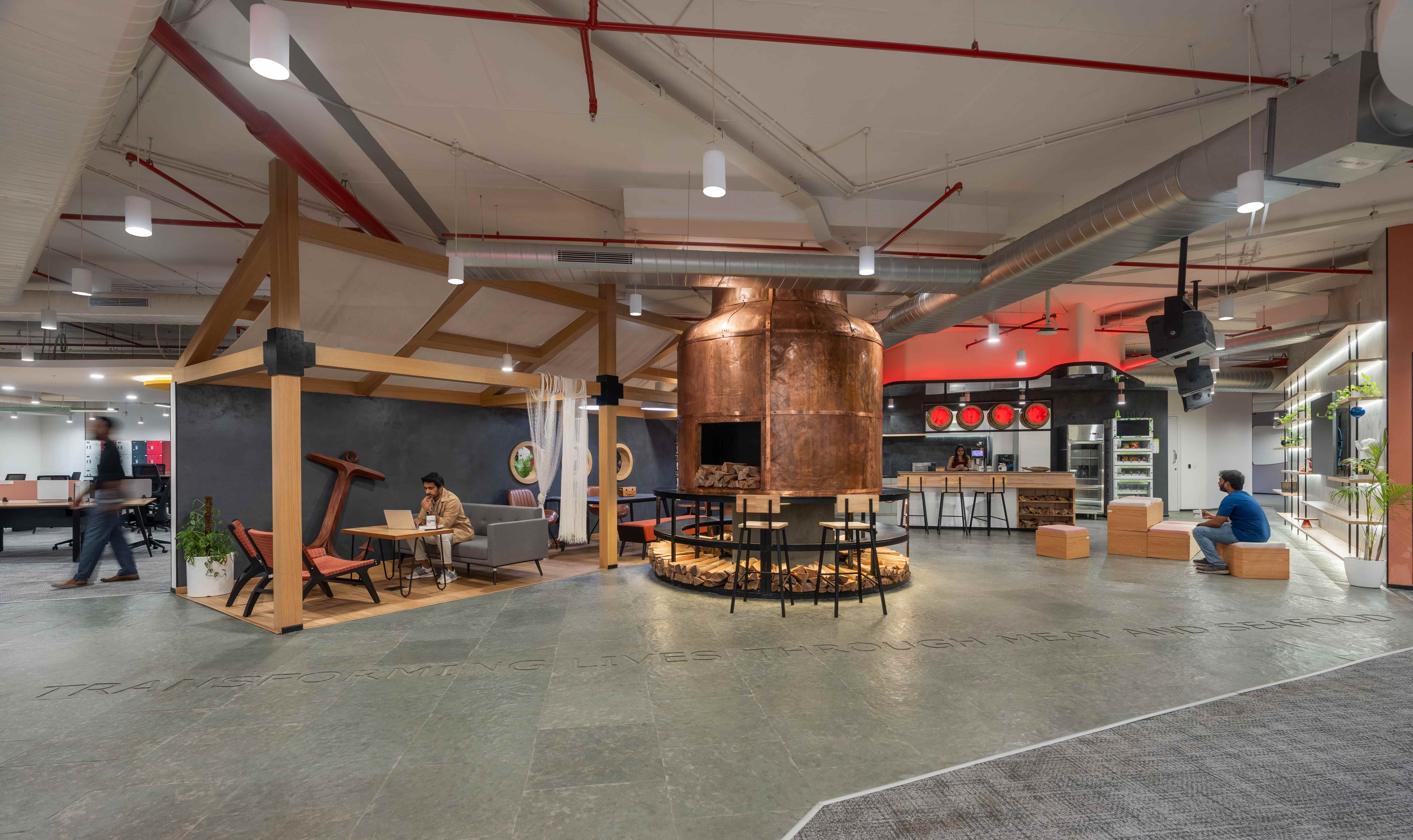
The relationship between transformative designs and spatial innovation enhances the visual appeal of work-centric workplaces. More importantly, it also contributes significantly to cultivating a collaborative culture, with the added benefits of heightened productivity at work and innovation.
Embracing Employee-Centric Workplaces: The American Express Way
Shifting to an employee-centric workplace is a strategic initiative, as illustrated by American Express (Amex), a globally integrated payments company. They faced two critical challenges: creating an unforgettable office experience and ensuring resilience for changing business needs, all while prioritizing employee well-being and brand loyalty.
1. Empathy-Driven Design
Instead of imposing a top-down design, Amex applied design thinking with empathy as the first step. By understanding employees' aspirations for pride, inclusivity, and choice, they developed design principles focused on human-centricity and flexibility. This led to Amex’s Bluework Approach, emphasizing technology adaptation, dynamic spaces, and a focus on wellness and sustainability.
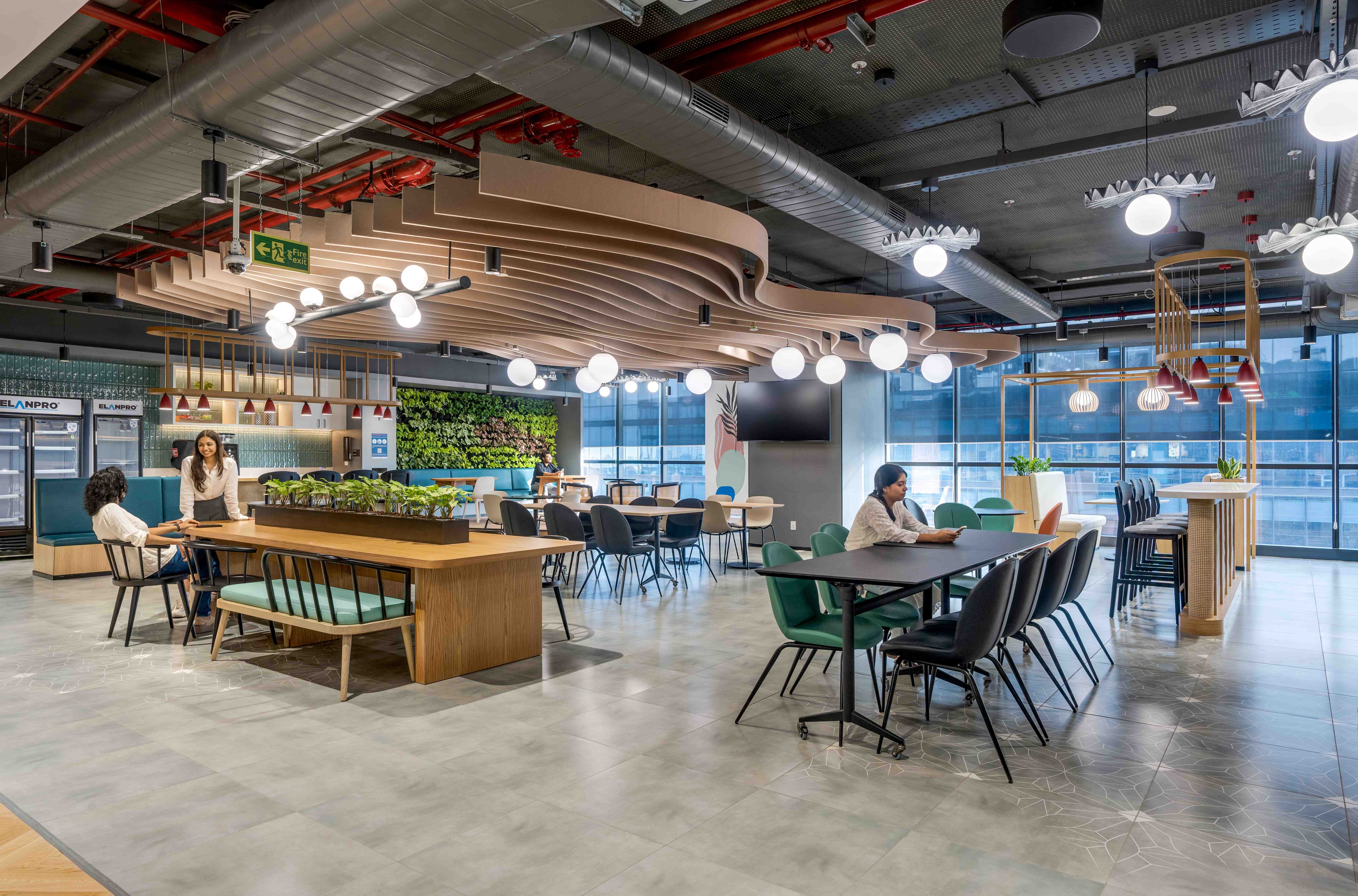
2. A Vertical Micro-Campus
Spanning five floors, the new Amex office is a vertical micro-campus, with amenities strategically spread to encourage interaction and connection. The "Hear, Nourish, See, Speak, and Sow" concept guides the design of each floor, creating unique social spaces and artworks.
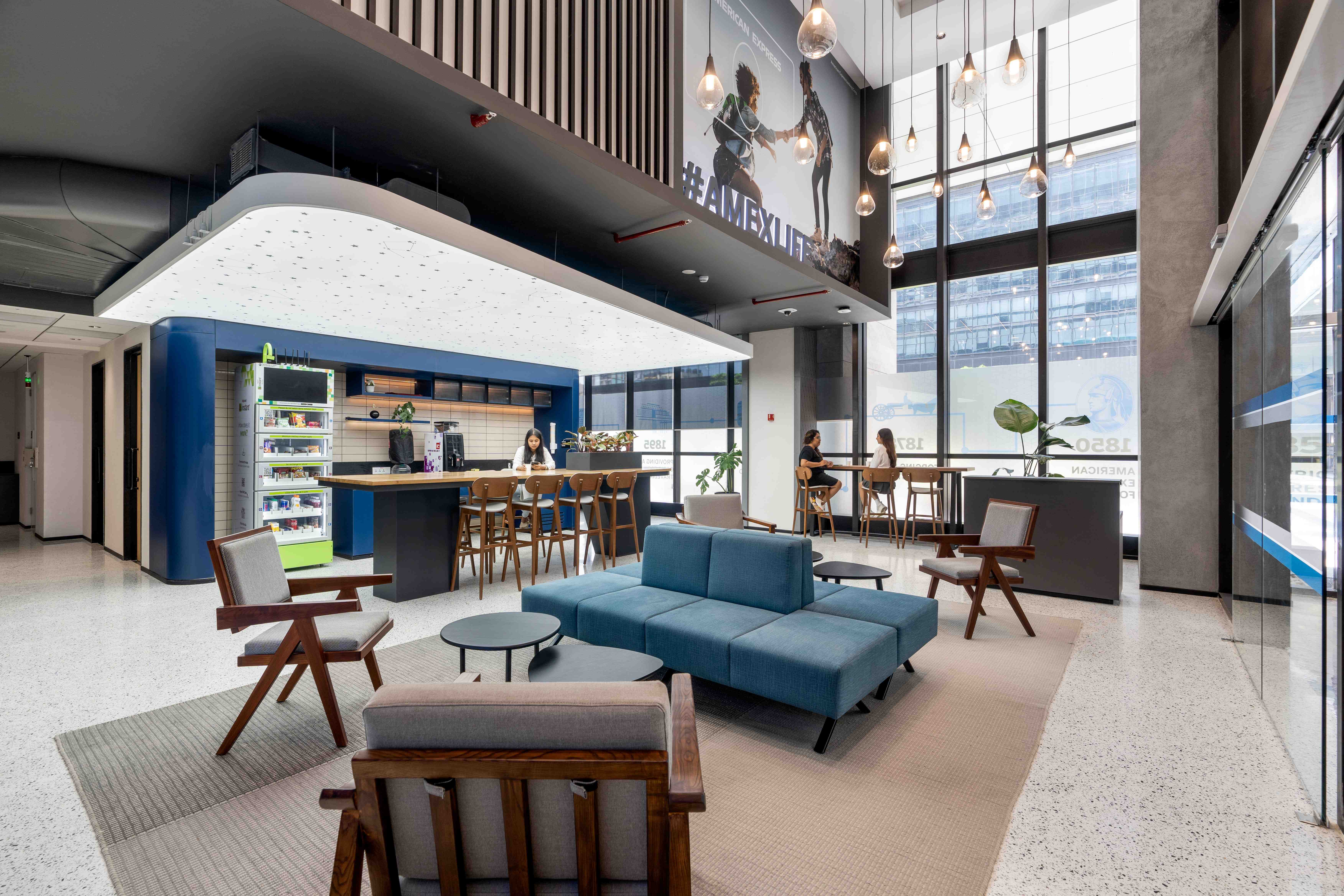
3. Resilience for Today's Business
Flexibility is embedded in the design. Modular planning allows workstations to expand into collaborative areas, meeting rooms, or scrum spaces, adapting to changing business needs. Each floor serves a specific purpose, with a central "Mother Floor" for common amenities and critical rooms.
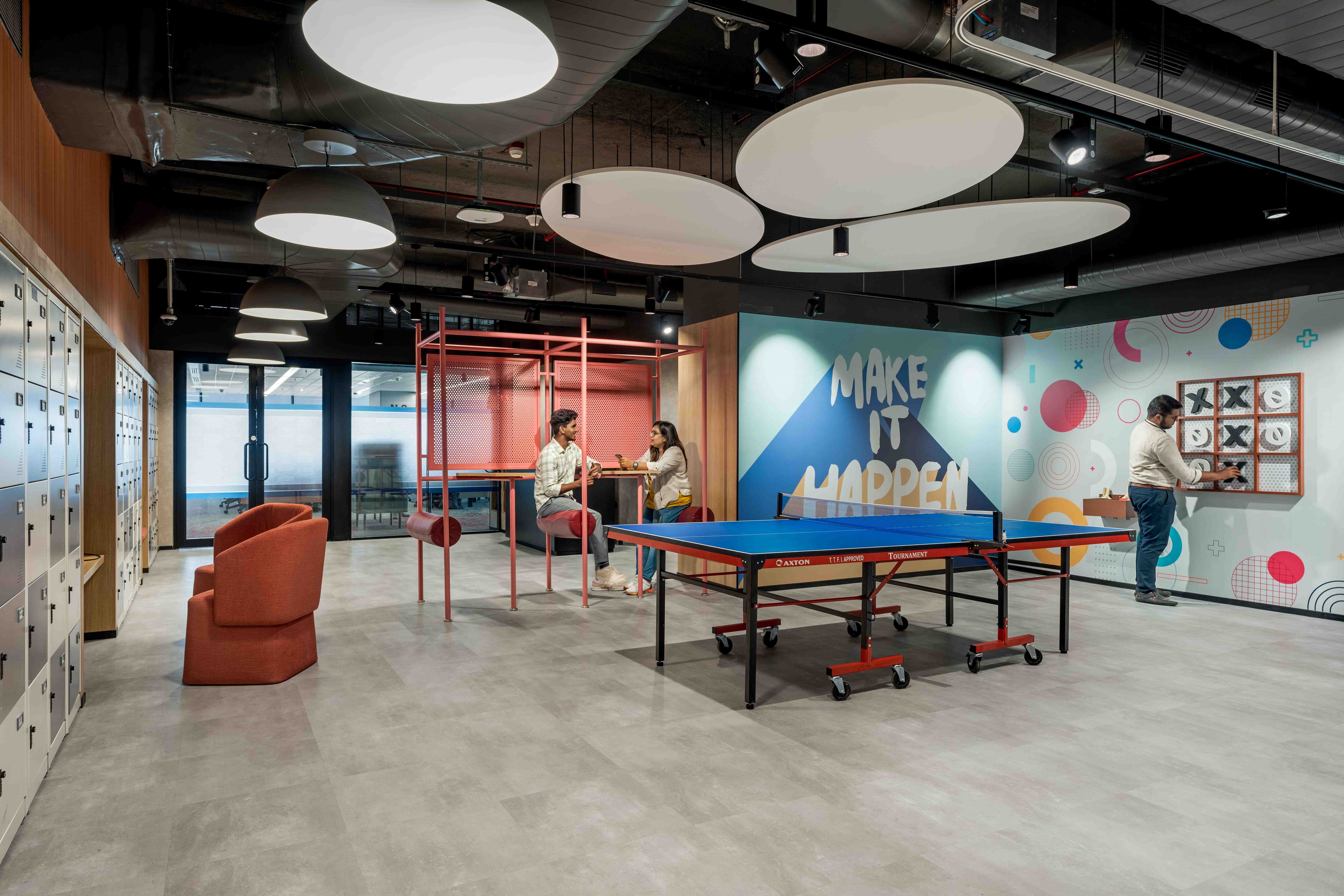
The transformation yielded outstanding results, including;
Amex's new workplace, designed by Space Matrix, exemplifies how strategic design fosters employee well-being, productivity, and brand loyalty. It showcases the power of a visionary approach and unwavering dedication to shaping exceptional workspaces for modern-day organizations.
In Conclusion
The first step toward reinstating the meaning of productivity at work relies heavily on the transformative potential of innovative workspace designs. Surpassing the limitations of conventional office layouts and embracing spatial innovation can help organisations cultivate environments that blend aesthetic appeal with functional efficiency.
These transformative designs can be an ideal catalyst for heightened collaboration, creativity, and employee engagement. These can also contribute to the realisation of your organisational goals. At Space Matrix, we assist you in leveraging these forward-thinking approaches, allowing you to create a workspace that places the well-being and satisfaction of your workforce at the forefront, ensuring they collaborate and deliver their best performance.
Curious about the impact of the workplace on your business goals?
Speak to our Workplace Experts!

